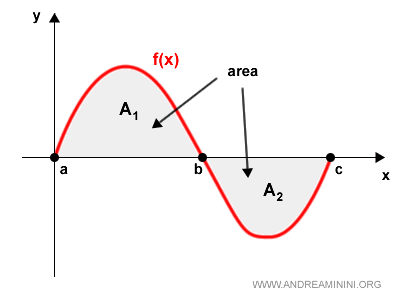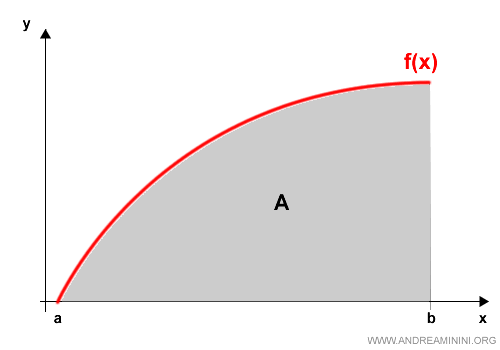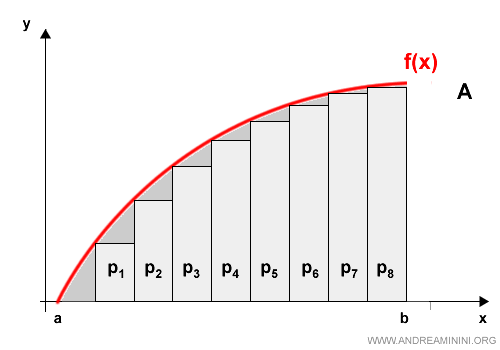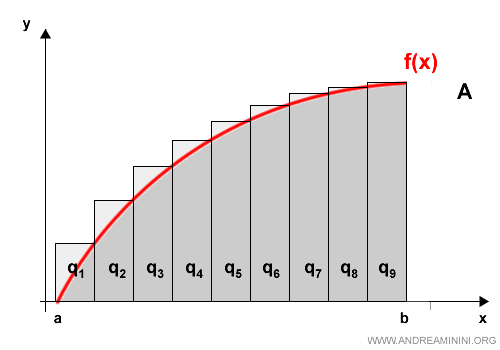Integral Calculus
The integral is a fundamental concept in mathematical analysis, used to compute the area between the graph of a function and the x-axis.

Integral calculus was first employed by Archimedes and Eudoxus of Cnidus in the 4th century BCE, using what is now known as the method of exhaustion to approximate the area of irregular shapes.
The method is called "exhaustion" because it works by successively filling the area with regular polygons that increasingly approximate the target region.
How the method of exhaustion works
Suppose we want to calculate the area under a parabola over the interval [a, b].

We begin by subdividing the area into inscribed polygons.
In this example, we use eight inscribed polygons: p1, p2, ..., p8.

Calculating the area of these regular polygons is significantly more straightforward.
The sum of their areas, denoted Amin, provides a lower estimate of the area under the parabola.
$$ A_{min} = \sum_0^n A(p_n) $$
Next, we divide the region using circumscribed polygons.
These polygons lie entirely outside the parabola and enclose the region from above.

We then compute the total area of these n regular polygons, labeled from q1 to q9.
This yields an upper estimate, Amax, of the area under the parabola.
$$ A_{max} = \sum_0^n A(p_n) $$
The actual area, A, lies somewhere between these two estimates:
$$ A_{min} \le A \le A_{max} $$
Note. The accuracy of the estimate increases with the number of polygons used to approximate the area. As the number of regular polygons n approaches infinity, the gap between Amin and Amax narrows, and both estimates converge to the true area of the parabola. $$ \lim_{n \rightarrow \infty} A_{min} = \lim_{n \rightarrow \infty} A_{max} = A $$
The difference between definite and indefinite integrals
There are two main types of integrals:
- Definite integral
This type of integral is evaluated over a specific interval (a, b). It is commonly used to compute the area under a curve, and the result is a real number. $$ \int_a^b f(x) \:\:dx $$ - Indefinite integral
This integral is computed over the entire domain of the function. It represents the antiderivative of the function - that is, it reverses the process of differentiation. The result is not a single value, but a general expression: a family of functions. $$ \int f(x) \:\:dx $$
Note. Definite and indefinite integrals serve different purposes and follow distinct computational approaches. They should not be confused.
And so on.
- The definite integral
- Combining partitions
- Characterizing integrable functions
- The additive property of definite integrals
- The sum of integrals
- Multiplying an integral by a constant
- Comparing integrals
- The mean value theorem for integrals
- The Riemann integrability of continuous functions
- The fundamental theorem of calculus
- Antiderivatives
- The fundamental formula of calculus
- The indefinite integral
- The integral of a product of a composite function and its derivative
- Integration by splitting into sums
- Integration by parts
- Integration by substitution
- Integration by substitution in definite integrals
- Proper integrals
- Improper integrals
- The comparison test for improper integrals
Multivariable integrals
